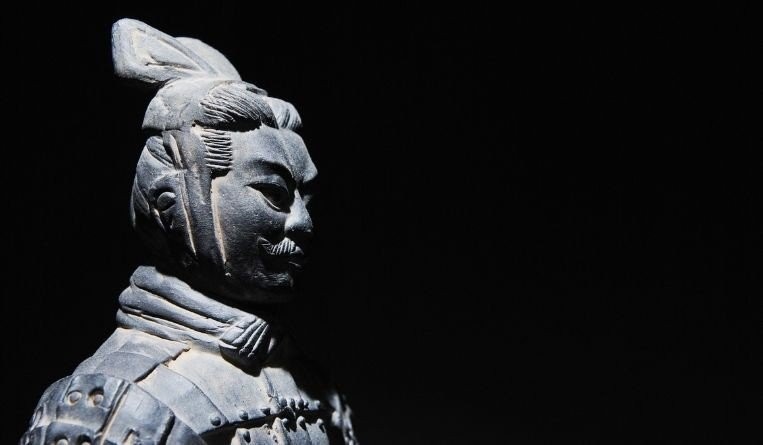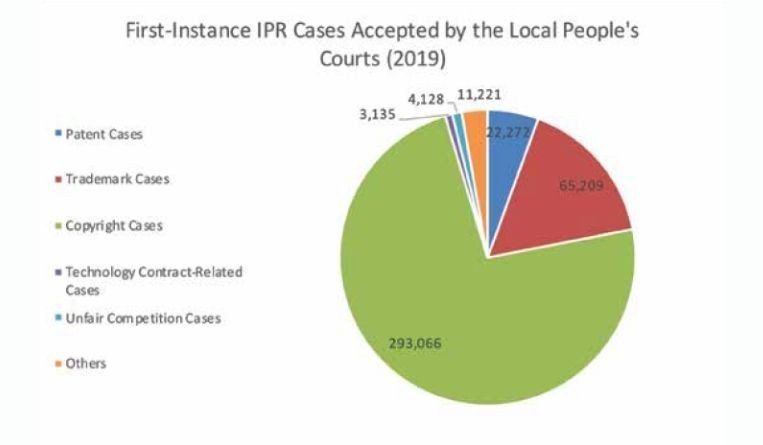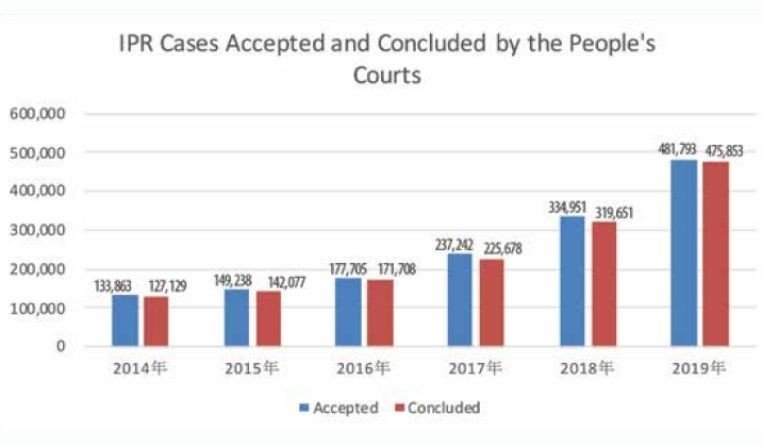File trademarks proactively and adequately so as to have solid and sufficient legal basis for trademark enforcement actions
China is a first-to-file jurisdiction and trademark squatting is active and frequent. The Chinese government is taking actions to fight trademark filings made in bad faith. Brand owners should file trademarks proactively and adequately, covering a broader scope of goods and services to obtain adequate trademark protection.
Chinese consumers, business and media tend to identify foreign brands by using their Chinese equivalents. Therefore, foreign brand owners should ensure that they file and register Chinese versions of their foreign-language marks for sufficient protection in China.
Businesses are now going online and the internet has turned the globe into a smaller and smaller world. A brand launched in another part of the world can become the target of trademark squatters, cybersquatters and hostile competitors in seconds due to the speedy and easy spread of the information online. Therefore, brand owners should file trademarks proactively and, in addition to filing trademarks, brand owners should also file and register trademark-formative domain names and social media accounts proactively.
Without adequate legal basis for trademark enforcement actions, one will not be able to “mass our forces at the enemy’s ‘center of gravity.’”
Flexible, smart and combined use of the tool box for trademark enforcement actions
The following government bodies are involved in administrative and criminal IP enforcement:
The Administration for Market Regulation (AMR), formerly known as Administrations for Industry and Commerce (AIC), is China’s primary market regulation an enforcement authority. After structural reform, the quality technical and supervision bureau (TSBs) (product quality authority) and the food and drug administrations (FDAs) are now part of AMR.
Other government bodies involved in administrative and criminal IP enforcement include:
- the PSBs and public prosecutors (procuratorates);
- the General Administration of Customs;
- the Copyright Protection Centre of China;
- China National Intellectual Property Administration (CNIPA), formerly known as SIPO, now part of the State AMR; and
- the Trademark Office (TMO) and the Trademark Review and Adjudication Board, now collectively known as the China National Intellectual Property Administration (CNIPA).
China sets monetary thresholds for pursuing counterfeiters for criminal liabilities. With basic evidence proving the gravity of the counterfeiting acts and the monetary threshold requirements having been met, the brand owners may file a complaint to the local PSB, i.e. the police, requesting a criminal investigation into the counterfeiters. Other competent government bodies will also transfer cases to the PSBs to enhance protection for brand owners and the public interest. If it is found that a crime has been committed after the police investigation, the police will transfer the case to the competent procuratorate to file criminal suits. The Chinese law enforcement authorities have been active in pursuing the counterfeiters for criminal liabilities. Brand owners should take the following steps to help the police and prosecutors to build a successful criminal case against the counterfeiters:
- File complaints directly to the PSBs, asking them to initiate criminal investigation, or urge the competent government bodies to transfer cases to the PSBs.
- Join forces with other brand owners and fellow victims in the criminal investigation and trial against common targets in order to aggregate the counterfeiters’ revenues from separate cases and increase the chances ofcriminal trial and heavier penalties on the counterfeiters.
- File supporting evidence, such as penalty decisions or verdicts issued to the infringers in prior cases.
In the PRC Trademark Law amended on April 23, 2019, and effective as of November 1, 2019, statutory damages on trademark infringement have been increased to Rmb5 million (US$720,000) from Rmb3 million (US$430,000) and punitive damages for grave trademark infringement have been raised from three to five times.
On April 23, 2019, the PRC Anti-unfair Competition Law was amended and effective, the second amendment since its enactment in 1993 and the first since 2017. The amended Anti-unfair Competition Law increased fines and damages for unfair competition acts, increasing statutory damages for acts violating IP rights from Rmb3 million (US$430,000) to Rmb5 million (US$720,000).
In recent years, Chinese courts have been rendering landmark verdicts with skyrocketing and unprecedented damages awarded to brand owners, reaching to millions of renminbi. These verdicts illustrate the Chinese courts’ increasing tendency to award substantial damages to brand owners. Trademark lawsuits now have more, and increasing, deterring effects. Trademark litigation can be much more of a deterrent if it can hold the individuals (ie, the masterminds of the infringement, the legal representatives or shareholders of the companies committing the infringing acts) liable for trademark infringement.
In recent years, China’s courts have rendered verdicts that have held company legal representatives or shareholders liable jointly or severally for trademark infringement perpetrated by their companies to prevent sophisticated infringers from abusing the independent legal person status of the company or the limited liabilities of shareholders to evade punishment and penalties.
In ExxonMobil, Zhang Zhimin (the legal representative of Beijing Beinong Guoxin Technology Development Co Ltd) and his daughter were sued as co-defendants for their part in the infringement regarding use of the trademark MOBIL (in both English and Chinese) on pesticides and fertilizers. The appellate court affirmed the trial court verdict and ordered the four defendants to pay damages of Rmb3 million (US$430,000) to ExxonMobil.
Brand owners should consider relying more on trademark litigation against counterfeiters and infringers in order to seek an injunction, damages and other civil relief (eg, a public apology); set an example to deter other infringers and educate the public; or create precedents.
Online counterfeiting is now one of the most significant challenges facing brand owners. Counterfeiters and infringers are internet savvy and quick to exploit technical advantages to imitate and copy popular products, and then promote and sell their counterfeits or infringing goods online to the global market. Brand owners with frequent and prolonged takedown issues are advised to hold face-to-face meetings with e-commerce platforms to explain the nature of the problems and/or join in anti-counterfeiting initiatives or alliances launched by e-commerce platforms to work out effective takedown solutions and follow up on more aggressive actions to win support from e-commerce platforms and go after counterfeiters and infringers in administrative, civil or criminal actions.
Brand owners may also consider conducting ad hoc takedown actions before or during popular online shopping events. The proper timing for the ad hoc takedown actions can be more effective in fighting counterfeiters or infringers online.
Chinese Customs is a major IP enforcement taskforce and is known for taking proactive seizure actions to protect IP rights. The likelihood of ex officio customs seizure actions depends on the knowledge of the customs officials working in the field about the brands. Regular road-show training for customs officials helps them to know the brand and increases the likelihood of customs seizures. Brand owners can also prepare enforcement manuals for customs officials, helping them to better distinguish between genuine goods and counterfeits and facilitating detection of suspected infringing goods.
Infringers and counterfeiters attend trade shows to solicit business. Brand owners should monitor influential trade shows so as to identify infringers and counterfeiters and take enforcement actions at trade shows in time or collect evidence to take follow-up actions after the trade shows.
In light of the nature of the dispute, brand owners should also consider using other kits in the tool box such as cease and desist letters, negotiation, mediation or arbitration, as well as resorting to commercial maneuvers and technical methods to fight counterfeiters and infringers.
Hand-in-hand in fighting counterfeiters, infringers and trademark squatters
It is a frequent scenario that one counterfeiter or infringer manufactures and/or sells the counterfeiting or infringing products involving multiple brands or one trademark squatter files or registers multiple trademarks in bad faith. Brand owners should share information, cooperate and join forces and support each other in fighting as joint actions can have more teeth.
Cooperation with the courts and law enforcement authorities
Brand owners with an extensive market presence and frequent and severe IP infringement issues should meet regularly with the competent Chinese law enforcement authorities in order to build close cooperation with them. They should also ask the authorities to include their brands in ex officio regional or nationwide anti-counterfeiting campaigns, which are frequently organized.
The SPC or other courts or law enforcement authorities publish draft laws, guiding opinions or regulations for public comments so as to make well-informed and considered laws, guiding opinions or regulations. Brand owners should submit opinions and proposals so as to ask the SPC or other courts or law enforcement authorities to address their concerns in the process of making or amending laws, guiding opinions or regulations etc.
Public education and enlist the support of the consumers in fighting counterfeiters, infringers and trademark squatters
Consumers are also victims of trademark counterfeiting and infringement and trademark squatting acts. Brand owners should consider taking steps such as using the media to educate consumers, warn counterfeiters, infringers and trademark squatters and win the support of the consumers and enlist their help in fighting a “people’s war” against counterfeiters, infringers and trademark squatters, encouraging them to provide leads for brand owners to initiate enforcement actions or offer necessary assistance to help consumers in filings complaints to the competent law enforcement authorities.
There is no “one size for all” strategy for trademark enforcement actions. More meticulous calculations in strategy lead to victory and few calculations result in defeat. Brand owners should work closely with local counsel to work out creative solutions and formulate tailor-made trademark enforcement strategies to overcome the challenges and better protect their brands, business interests and consumers, who patronize and follow the brand owners for the quality and enjoyable consumer experience the brand owners offer.




.jpg)






